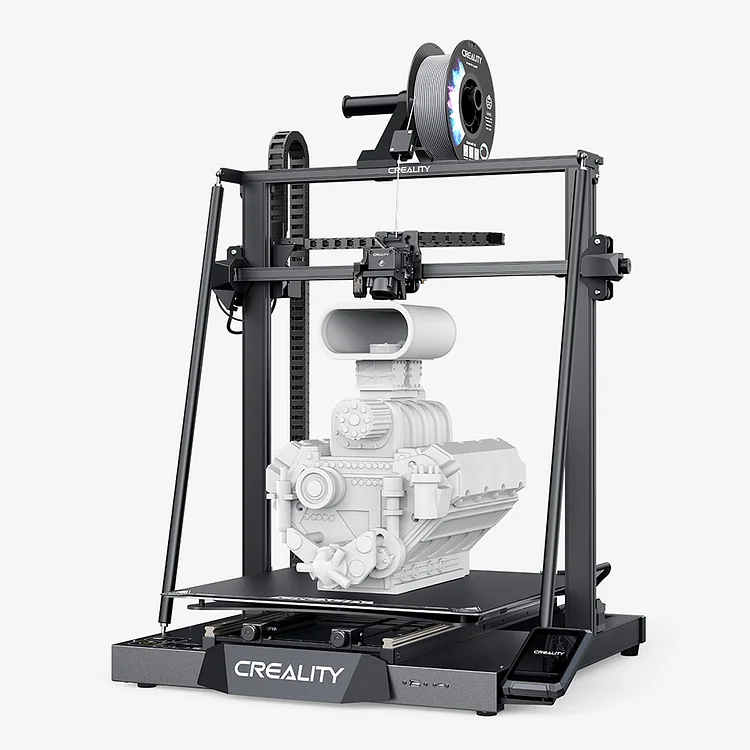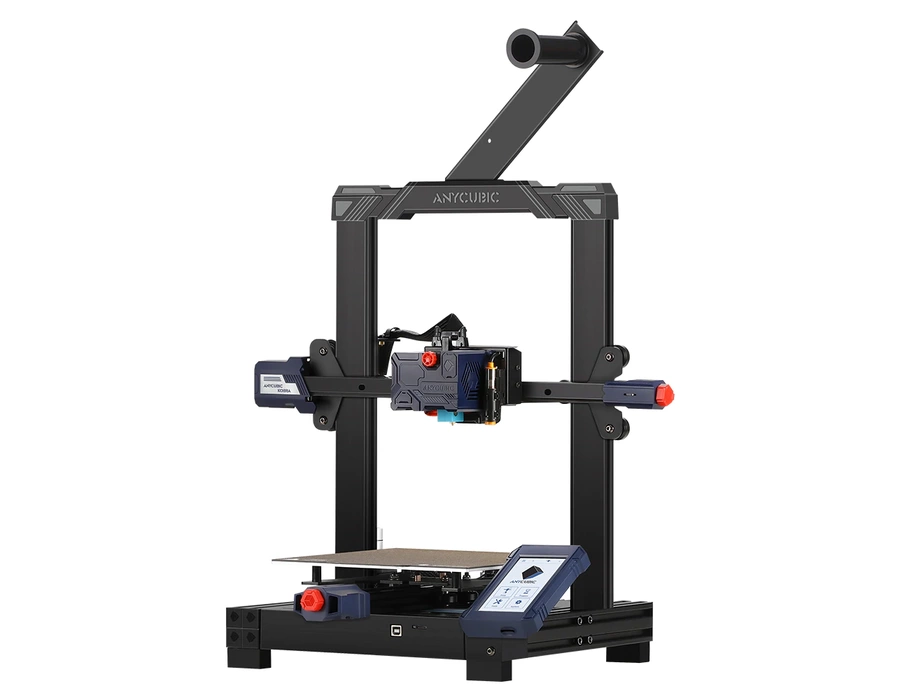Compare CR M4 vs Kobra
Comparison between the best 3D printers
Choose the best 3D printer at the best price. The cheapest 3D printers are here.
Buy a 3D printer here with 3D Fila.
 |
 |
|
| Model | CR M4 |
Kobra |
| Printing Material | Filament | Filament |
| Buy Filament for Creality 3D CR M4 | Buy Filament forAnycubic Kobra | |
| Estimated price | $1099,00 | $259,00 |
| Manufacturer | Creality 3D | Anycubic |
| Release Year | 2023 | 2022 |
| Print Volume [mm] | 450x450x470 | 220x220x250 |
| Printer Size [mm] | 655x700x865 | 486x430x486 |
| Weight [kg] | 23 | 7 |
| Power Loss Recovery | YES | YES |
| Enclosed printer | NO | NO |
| Bed Leveling | Automatic | Automatic |
| Filament End Sensor | YES | NO |
| Bed type | Heated | Heated |
| Power supply system | Direct Drive | Direct Drive |
| Standard nozzle | 0,4 | 0,4 |
| Maximum Nozzle Temperature [°C] | 300 | 260 |
| Maximum Bed Temperature [°C] | 100 | 110 |
| Maximum printing speed [mm/s] | 180 | 180 |
| Filament holder | YES | YES |
| Camera for supervision | NO | NO |
| Recommended filaments | PLA, PETG, TPU, ABS, PLA-Wood, PA, PLA-CF | PLA, PETG, Tritan, Flex, ABS |
| Recommended slicers | Cura, Simplify, Slic3r, IdeaMaker | Cura, Simplify, Slic3r, IdeaMaker |
| Maximum Resolution [mm] | 0,1 | 0,1 |
| Processor | ||
| Display | Display touchscreen 4,3'' | Display touchscreen 4,3'' |
| Power Supply | 110/220V / 800W | 110/220V / 400W |
| Connectivity | SD / USB / Wi-Fi | SD / USB |
| Operating systems | Windows, Mac, Linux | Windows, Mac, Linux |
| Date of registration in the system | 2023-02-06 | 2022-11-09 |
| Release date | 2023 | 2022 |
| Extra features | The Creality CR-M4 printer stands out for its easy assembly and automatic table leveling. With dual-gear extruder technology and direct drive, it ensures quality prints. It offers Wi-Fi and LAN connections for easy file sending. Its large construction volume of 450x450x470 mm allows for bold projects. It has linear rails and a high-power Y motor, supporting up to 30 kg on its plate. The innovative design includes an efficient cooling system and a removable screen controller, optimizing usability and comfort during printing. | The Anycubic Kobra features automatic bed leveling and a direct extruder for easy filament handling. The print bed is coated with PEI on a flexible steel plate, improving adhesion and making prints easier to remove. The printer features sensorless homing and is designed to be easily disassembled for easy maintenance and customization. |
| Support for multiple colors and materials (AMS and CFS) | NO | NO |
Notes * |
||
| Cost-benefit | 6 / 10 | 7 / 10 |
| Hardware | 2.8 / 10 | 1.8 / 10 |
| Tela | . | . |
| Print volume | 4 / 10 | 3 / 10 |
| Performance | 1 / 10 | 1 / 10 |
Conclusion |
| In evaluating the Creality CR M4 and the Anycubic Kobra, it becomes evident that both printers serve different needs and preferences within the 3D printing community. The Creality CR M4, with its larger print volume and advanced features such as a filament end sensor and superior maximum nozzle temperature, appeals to users looking for versatility in material use and the ability to tackle larger projects. Its robust construction and high power capacity further enhance its performance, making it suitable for demanding tasks. However, this comes at a higher price point, which may not be justifiable for those who are more casual users or hobbyists. On the other hand, the Anycubic Kobra is significantly more affordable and offers a compact design, making it well-suited for smaller workspaces or those new to 3D printing. While it lacks certain advanced features like a filament end sensor, it still provides an excellent user experience with automatic bed leveling and a flexible print bed that eases print removal. The Kobra is particularly attractive for users seeking a budget-friendly option without compromising essential functionality. Ultimately, the choice between the two comes down to the user's specific needs. Those prioritizing a diverse range of materials and larger print capabilities will find value in the CR M4 despite its higher cost. In contrast, individuals looking for an accessible entry into 3D printing at a reasonable price may prefer the Anycubic Kobra, which still delivers solid performance for typical projects. The decision hinges on weighing the desired features against budget constraints, ensuring that users select the printer that aligns best with their 3D printing aspirations. |

